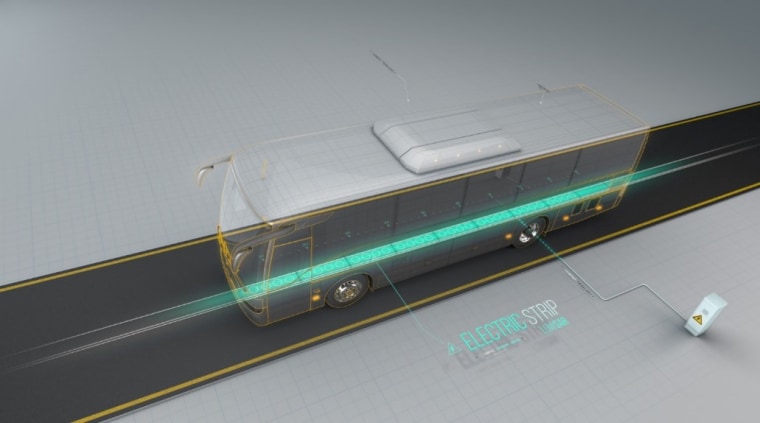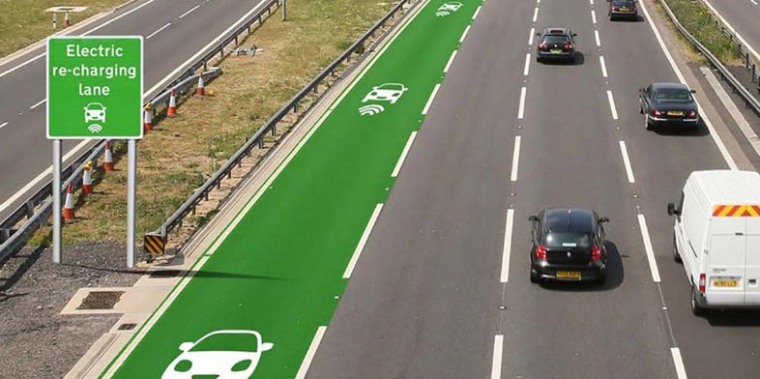Gas stations are likely to disappear in a future full of electric vehicles, but the even latest technology for powering cars could soon be a thing of the past. Instead of having to regularly plug in electric vehicles, future roadways could power cars while they're in motion, so you never have to stop for a recharge again.
Last week, telecommunications giant Qualcomm tested a 100-meter stretch of road outside Paris that was wired to dynamically charge electric vehicles as they rode over it. The road has metal coils embedded into the asphalt, each spaced a foot apart, which create an electromagnetic field that transmits energy to a receiver to supply the car's battery. During tests, the road was able to transmit 20 kilowatts of energy to cars traveling 75 mph.
Israeli-based start-up ElectRoad also announced successful tests of its dynamic charging system on an 80-foot test track earlier this year. The company now plans to embed dynamic charging systems along public transportation routes in Tel Aviv where buses and delivery trucks operate.
But building and wiring roadways that can power cars isn’t cheap, so dynamic charging will first be rolled out slowly at a few key locations.
“Think about taxis lining up at the airport,” says Steve Pazol, Qualcomm's vice president and general manager of wireless charging. “As they’re moving through the row, they’re getting a charge wirelessly.” The current system is about 90 percent as efficient for charging electric cars as plugging in, Pazol says.
Another potential place for dynamic charging systems could be at stoplights or intersections, where cars could be powered while they wait. Qualcomm is even working with Mercedes on a system that can wirelessly charge parked cars. It's set to be released later this year on a hybrid version of the 2018 Mercedes-Benz S550e.
In theory, dynamically charged cars could run forever — making batteries smaller and lighter, and making cars faster and cheaper. Right now, a Tesla Model S has a range of only about 300 miles per charge, and its battery weighs 1200 pounds and costs upwards of $10,000.
Don MacKenzie, a researcher at the Sustainable Transportation Laboratory at the University of Washington, says that at full scale, wiring roads for dynamic charging could be more cost effective than installing batteries in millions of electric vehicles. Still, he wonders about the cost of tearing up roads to install these systems.
“We seem to have a hard enough time keeping our basic asphalt and concrete roads in a state of good repair, let alone roads with embedded hardware and associated controls,” MacKenzie says. “I suspect these things won’t be cheap to maintain, and it’s not clear who will be willing to pay for that.”

Tim Cleary, director of BATTERY, an energy-storage research laboratory at Penn State University, sees a more limited future for hi-tech roadways.
“New systems are likely to be successful in high-traffic areas where bus routes or other transportation methods are very repeatable, but I don’t think there is any way around onboard energy storage,” he says. “You can’t invent stuff on roads and accommodate customers. Their needs are going to be in flux.”
But Qualcomm’s Pazol thinks that when people start to drive cars that never need to stop, they’ll quickly get hooked. “It is kind of a crazy feeling,” says Pazol. “All of a sudden, you don’t even worry about the car.”
